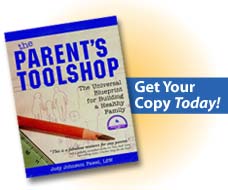EXPERT ON CALL – HANDLING TEMPER TANTRUMS
Q. I’ve read that I should ignore my child’s tantrums, but I worry that he’ll think I don’t care. What is the best way of handling temper tantrums?
A. Not all tantrums are alike. Therefore, using one approach for all tantrums is usually ineffective. You need to identify the cause of the tantrum your child is having to respond in a way that is most productive. There are four types of tantrums:
- Frustration tantrums. When a child is frustrated, it is reassuring for a parent to notice those feelings and the difficulty of the situation. “It’s really hard to put those Legos together isn’t it? Sometimes you feel like giving up, huh?” Gentle words and touch will help comfort the child.
- Power tantrums are the result of children not getting what they want. Parents often feel their only
 options are to give in or argue, which are both counterproductive. Instead, recognize the child’s disappointment at not being able to control the limits. Then shift the focus to what the child can control, by offering choices within the limits you’ve set. For example, “I know you’d like to have a cookie before dinner. If you’re hungry, you can either have a carrot or some grapes.” If the child still tries to influence you with a tantrum, restate the choices once, then disengage from the power struggle and ignore any further tantrum behavior.
options are to give in or argue, which are both counterproductive. Instead, recognize the child’s disappointment at not being able to control the limits. Then shift the focus to what the child can control, by offering choices within the limits you’ve set. For example, “I know you’d like to have a cookie before dinner. If you’re hungry, you can either have a carrot or some grapes.” If the child still tries to influence you with a tantrum, restate the choices once, then disengage from the power struggle and ignore any further tantrum behavior.
- Attention tantrums are special performances that keep parents involved in trying to stop the unwanted behavior. Let children know that you can’t understand them when they talk or act that way. Give them a suggestion for getting your attention in a positive way. Reassure them that when they calm down you will listen to them. Then, ignore only the tantrum behavior. If the child says or does anything calmly or in an appropriate way, respond respectfully. The child will soon find that tantrums will cause the parent to withdraw attention, rather than get more involved.
- Over-stimulation tantrums usually occur in children who are too young to regulate their body’s reaction to hunger, fatigue, or being overwhelmed. If a child is overstimulated, get away to a calm, quiet setting or create one as soon as possible. Acknowledge the child’s needs and keep verbal interactions to a minimum. Holding or rocking the child can either calm a child or add more stimulation. Try it and see if it helps.
Destructive behavior: Any of these tantrums can involve destructive behavior. In this case, still address the underlying emotions based on the type of tantrum it is. Let the child know it’s okay to feel angry, but that you won’t let him hurt himself or others. Try gently but firmly hugging, rocking, or sitting still until the wave of energy passes. If this only increases the child’s anger, try channeling the anger energy in acceptable physical ways, like hitting pillows or drawing a mad picture. If any interaction escalates the tantrum (as with attention tantrums), move the child to a safer location and let the child work through the anger while you selectively ignore the behavior.
If children can see that tantrums do not serve any purpose or have no payoff, they will be more open to learning skills for managing their overwhelming emotions. As they mature, they will naturally use these skills to replace tantrums and both of you will feel more confident and self-controlled.
If you want more insights, information and practical tools and tips about handling temper tantrums:
- Learn all there is to know about preventing and stopping every type of tantrum by accessing the Taming Temper Tantrums training resource package. It even includes a video challenge to help you learn how to tell the difference between the different types of tantrums.
**************************
Jody Johnston Pawel, LSW, CFLE is President of Parent’s Toolshop® Consulting, where she oversees an international network of Toolshop® trainers. For 30+ years, Jody has trained tens thousands of parents and family professionals worldwide through her dynamic workshops and hundreds of interviews with the media worldwide, including Parents and Working Mother magazines. She is the author of the award-winning book The Parent’s Toolshop®, and countless multimedia resources that support and educate parents from diverse backgrounds, plus other adults who live or work with children. You can find them at her award-winning website, www.ParentsToolshop.com.
Reprint Guidelines: You may publish/reprint any article from our site for non-commercial purposes in your ezine, website, blog, forum, RSS feed or print publication, as long as it is the entire un-edited article and title and includes the article’s source credit, including the author’s bio and active links as they appear with the article. We also appreciate a quick note/e-mail telling us where you are reprinting the article. To request permission from the author to publish this article in print or for commercial purposes, please complete and send us a Permission to Reprint Form.



1 thought on “HANDLING TEMPER TANTRUMS”
Pingback: What Is The Best Way Of Handling Temper Tantrums At Bedtime That Are Caused By Toddler Separation Anxiety? : Parents Toolshop